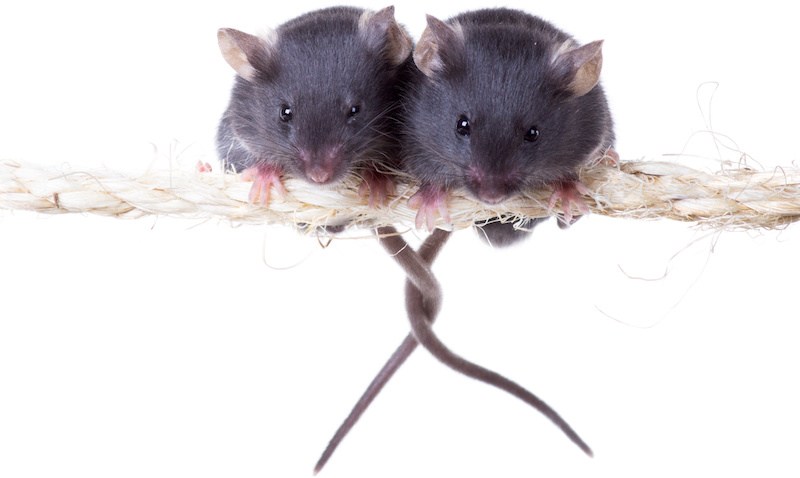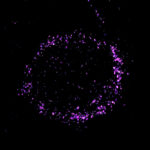A huge leap for cloning

Animal cloning, the creation of a genetically identical copy of an individual organism, holds promise for many different reasons, including its use to conserve endangered species and to improve our understanding of developmental biology, which could eventually help us prevent or reverse developmental disorders from the get-go. Although more than 20 species of animals have been cloned so far, cloning efficiency, or the percent of successful live births, has remained universally low and economically out of reach for most practical applications.
But now, researchers at Boston Children’s Hospital have reported a new cloning technique that has yielded the highest efficiency ever reported in mouse cloning, capable of producing 13 to 16 times more mouse pups than previous methods. The findings were reported in Cell Stem Cell.
To improve mouse cloning efficiency, a team led by the study’s senior author Yi Zhang, PhD, corrected two factors that they had previously identified as having impact on successful development of cloned embryos.
Zhang and his team’s findings have improved upon an animal cloning method called somatic cell nuclear transfer (SCNT), which takes the nucleus from a somatic donor cell (a donor’s body cell that’s neither sperm nor egg cell) and transfers it into a host’s egg cell that has had its nucleus removed.
After the cell with the swapped-in-nucleus divides and multiplies, it eventually generates an early-stage embryo with the donor’s DNA. Cloning is regarded as successful if the embryo, after implantation into a surrogate’s uterus, goes on to develop into a live-born individual with the donor’s DNA.
To increase the cloning efficiency of SCNT, the researchers focused on fixing two epigenetic barriers, related to the regulation of turning genes on or off. The first is abnormal activation of the Xist gene and the second is the enrichment of a gene repressor called H3K9me.
Tackling two cloning barriers
Xist, which stands for X-inactive specific transcript, is an X-chromosome-linked gene that plays an important role in silencing one copy of the X chromosome in females, who normally inherit two X chromosomes: one from their mother and one from their father.
“Without intervention, X-chromosome activation is typically abnormal in SCNT embryos, leading to developmental failure,” says Shogo Matoba, PhD, a former postdoctoral researcher in Zhang’s lab and the first author of the new study. Matoba is now a senior scientist RIKEN Rioresource Research Center in Japan. In a review article published in the same issue of Cell Stem Cell, Matoba and Zhang summarize recent advances in SCNT technology and its potential applications for both reproductive and therapeutic cloning.
By using genetic modification to knock out the Xist gene in donor cells — before their nuclei are removed and transferred into host egg cells — Zhang’s team was able to fix abnormal X-chromosome inactivation.
Zhang’s team and others have also showed that H3K9me3, a marker of gene repression, prevents transcription activation of developmental genes in SCNT embryos. H3K9me3 represents trimethlyation (addition of three methyl groups) of lysine 9 (abbreviated as K9) on H3, a basic protein that is involved in packaging DNA. Trimethylation effectively turns off or silences genes. Could de-methylation, or removal of the methyl groups, help reverse the gene-silencing effects of H3K9me3?
Indeed, Zhang’s team observed that overexpression of a demethylase called Kdm4 was able to activate the genes, which in turn enable SCNT embryos to develop through the pre-implantation stage at a rate similar to that of in-vitro fertilization. To achieve overexpression of Kdm4, the team injected Kdm4d messenger RNA into the host egg cell after it had received the donor’s nucleus, which generates production of the Kdm4d protein. In turn, the Kdm4d protein removes the repressive H3K9me3 mark.
“By knocking out Xist in donor cells and overexpressing Kdm4, we can improve the mouse cloning efficiency of SCNT to an unprecedented 23.5 percent pup rate,” says Zhang, who is a Howard Hughes Medical Institute senior investigator in the Boston Children’s Program in Cellular and Molecular Medicine. He is also the Fred Rosen Professor of Pediatrics at Harvard Medical School.
Although this is a striking improvement to the SCNT efficiency, Zhang’s team also acknowledges that there is more research to be done. In the cloned mouse pups, they still observed developmental abnormalities including larger-than-normal placentas and a complete loss of histone H3K27me3 genomic imprinting. (Typically, this gene is “imprinted” from the mother’s genome into the offspring’s DNA, which is important for silencing certain genes and enabling normal development.)
“The loss of H3K27me3 imprinting might account for developmental defects observed in some SCNT embryos,” Zhang says. “More research in this area could lead to additional discoveries that might further improve our cloning efficiency.”
Related Posts :
-

New research sheds light on the genetic roots of amblyopia
For decades, amblyopia has been considered a disorder primarily caused by abnormal visual experiences early in life. But new research ...
-

Thanks to Carter and his family, people are talking about spastic paraplegia
Nine-year-old Carter may be the most devoted — and popular — sports fan in his Connecticut town. “He loves all sports,” ...
-

A new druggable cancer target: RNA-binding proteins on the cell surface
In 2021, research led by Ryan Flynn, MD, PhD, and his mentor, Nobel laureate Carolyn Bertozzi, PhD, opened a new chapter ...
-

Genetic causes of congenital diarrhea and enteropathy come into focus
Congenital diarrheas and enteropathies are rare and devastating for infants and children. Treatments have consisted mainly of fluid and nutritional ...





